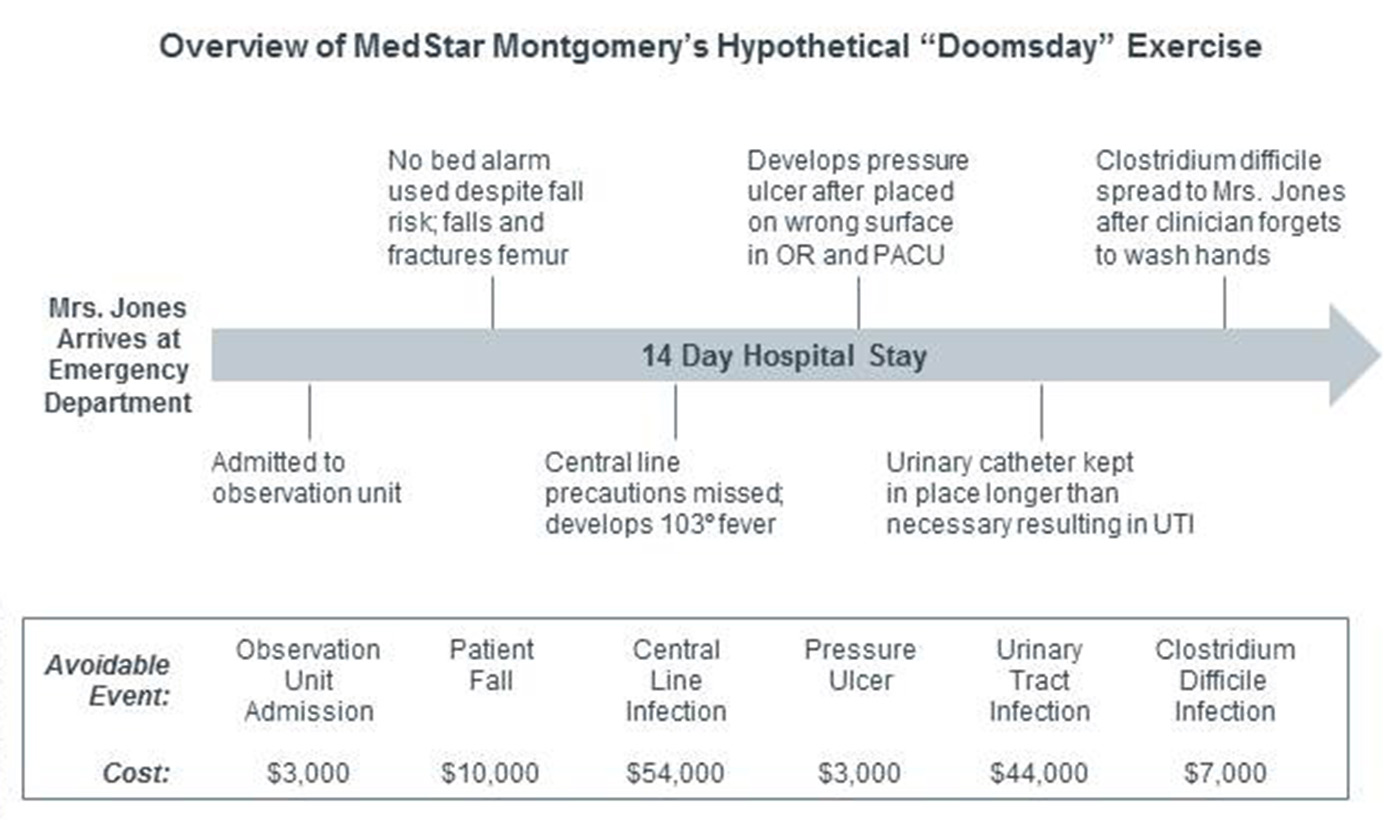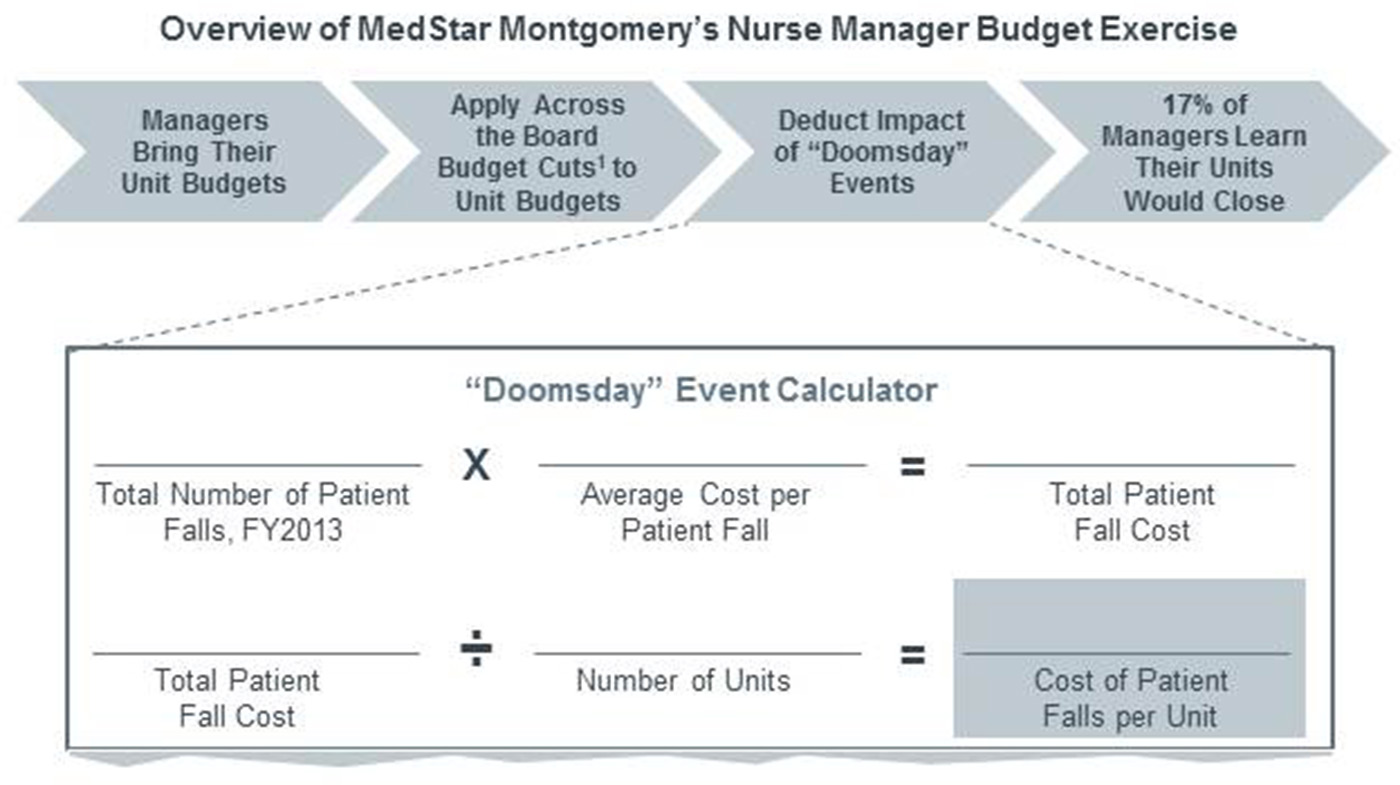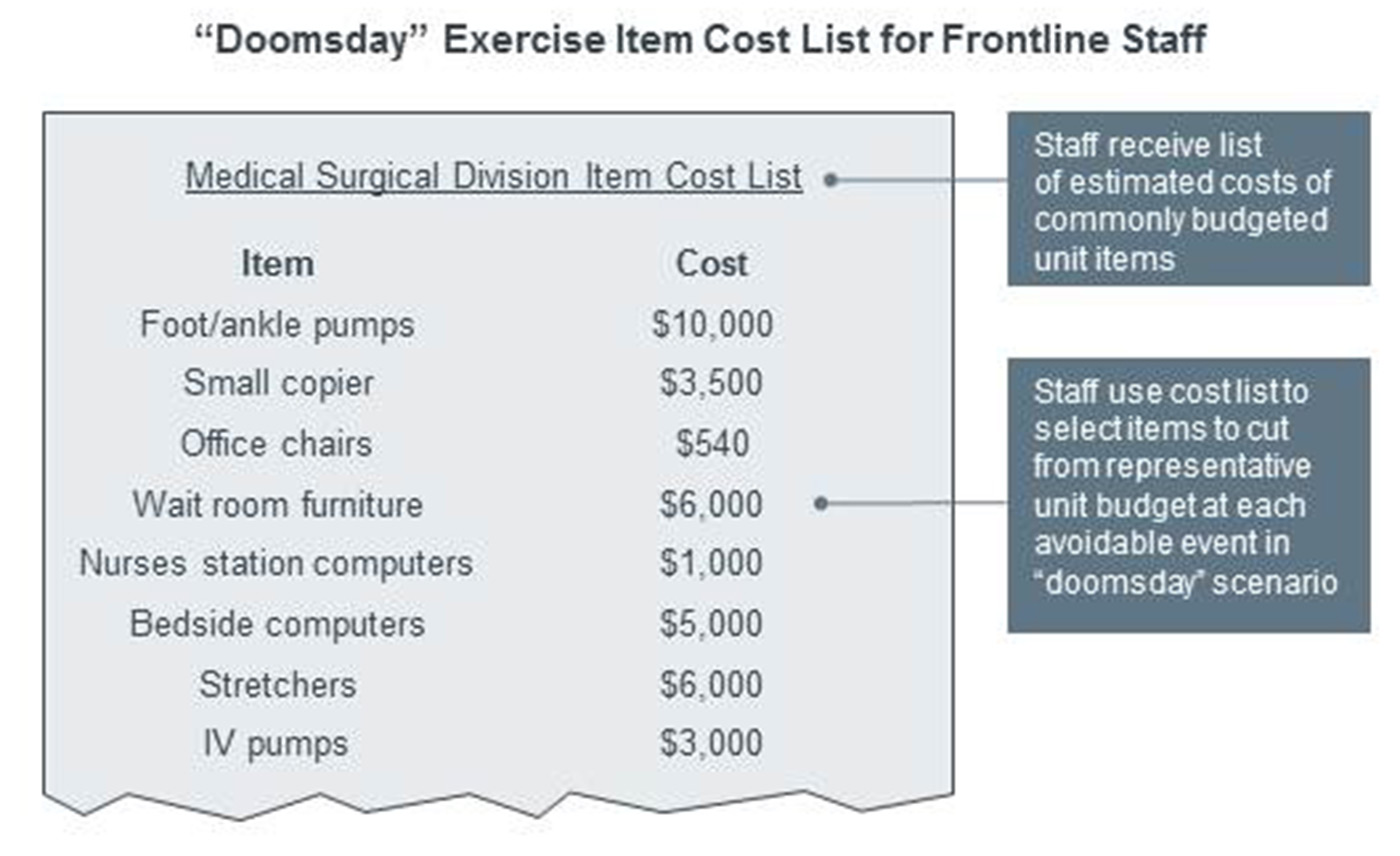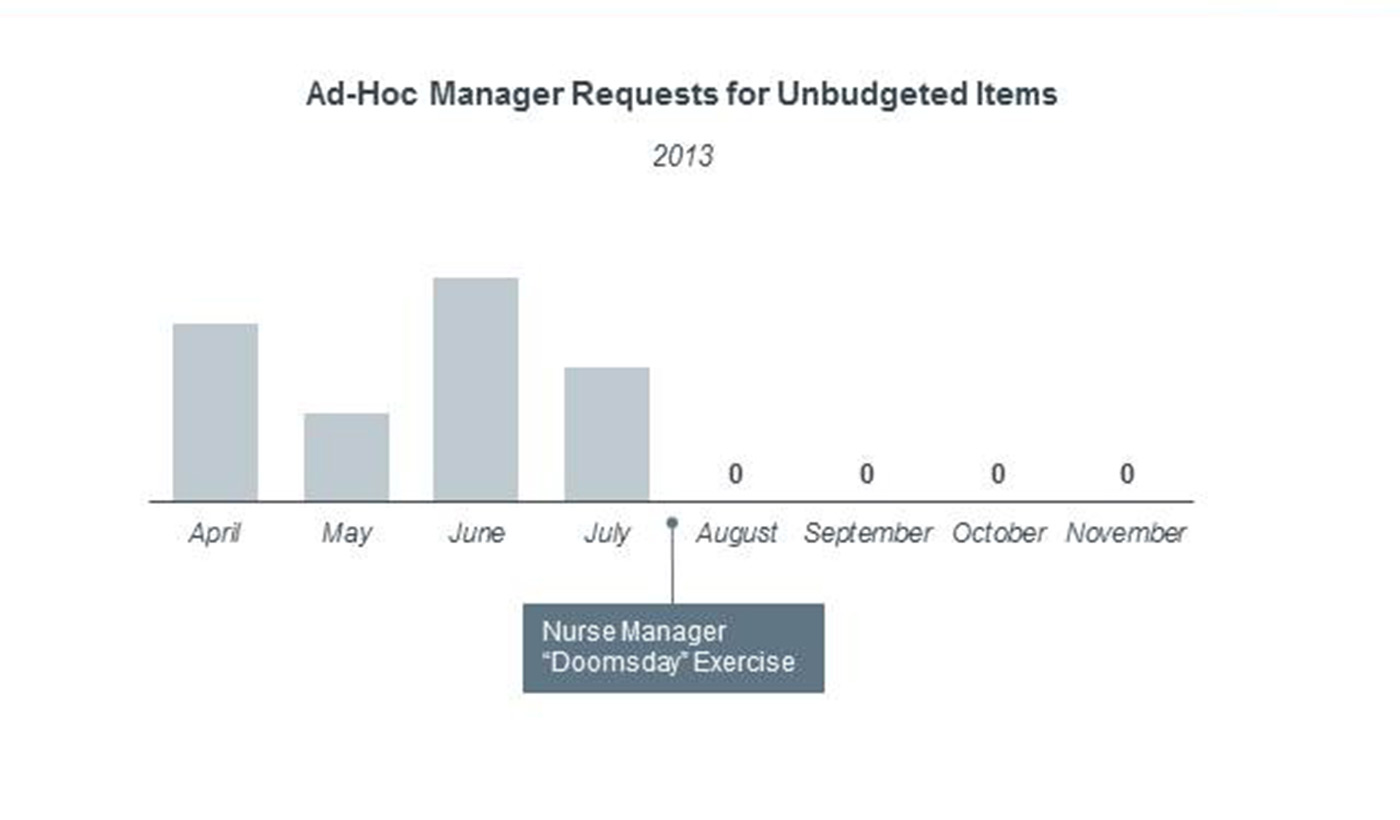Senior leaders rely on managers to communicate messages to frontline staff. But all too often, managers themselves struggle to fully comprehend the implications of the complex market forces shaping executive decisions.
As a result, key information never reaches the staff responsible for implementing strategies. This disconnect is a common barrier to strong engagement.
Developing the "doomsday" exercise
To help nurse managers better understand the costs associated with avoidable adverse events, leaders at Medstar Montgomery Medical Center developed the “doomsday” exercise—a fictional scenario in which a patient develops several hospital-acquired conditions resulting from clinical errors.

After they had reviewed the scenario, leaders asked managers to simulate the impact of the "doomsday" events on their own unit budgets under future financial pressures. First, they had managers apply an initial budget deduction reflecting the anticipated impact of external market forces on the organization.
Next, the group calculated the average cost per unit for each "doomsday" event, based on Medstar's actual data, using the tool below. Managers were then asked to deduct this amount from their own unit’s budget. When nearly a fifth of managers realized their units would have to close if the scenario were real, the full impact of the exercise sank in.

Adapting the "doomsday" scenario for the front line
Some nurse managers appreciated the exercise so much, they decided to adapt the scenario for frontline staff. They developed two tools to help contextualize it:
- An itemized list of unit expenses
- A three-by-five foot photographic magnetic board with moveable, magnetic photos of each item on the list
Managers created the magnetic board in-house, using a camera, color printer, laminator, and magnetic tape.

Following each avoidable event in the "doomsday" scenario, managers asked staff to remove from the magnetic board the items they would cut from their unit’s budget to offset the additional costs. Forcing staff to make tough trade-offs gave them a true appreciation for the difficult choices executives and nurse leaders must make as a result of market forces beyond their control.
Learn more at the national meeting
Worth the effort
The CNO felt the impact of this exercise house-wide. Ad-hoc budget requests, which averaged two per month, decreased to zero. Staff themselves expressed a much greater appreciation of the budgetary trade-offs facing executives.

Don't miss out on the latest Advisory Board insights
Create your free account to access 2 resources each month, including the latest research and webinars.
Want access without creating an account?
You have 2 free members-only resources remaining this month remaining this month.
1 free members-only resources remaining this month
1 free members-only resources remaining this month
You've reached your limit of free monthly insights
Become a member to access all of Advisory Board's resources, events, and experts
Never miss out on the latest innovative health care content tailored to you.
Benefits include:
You've reached your limit of free monthly insights

